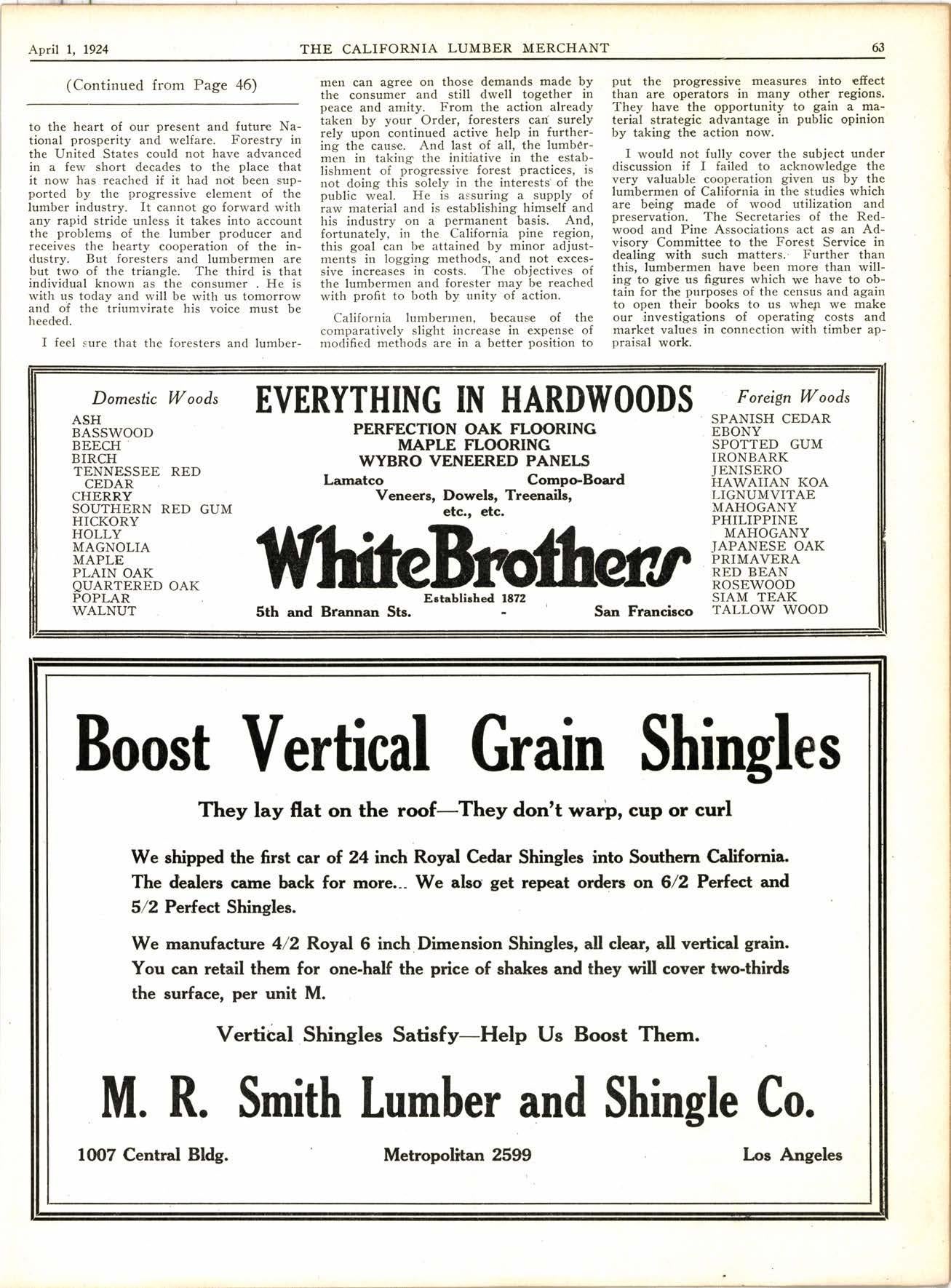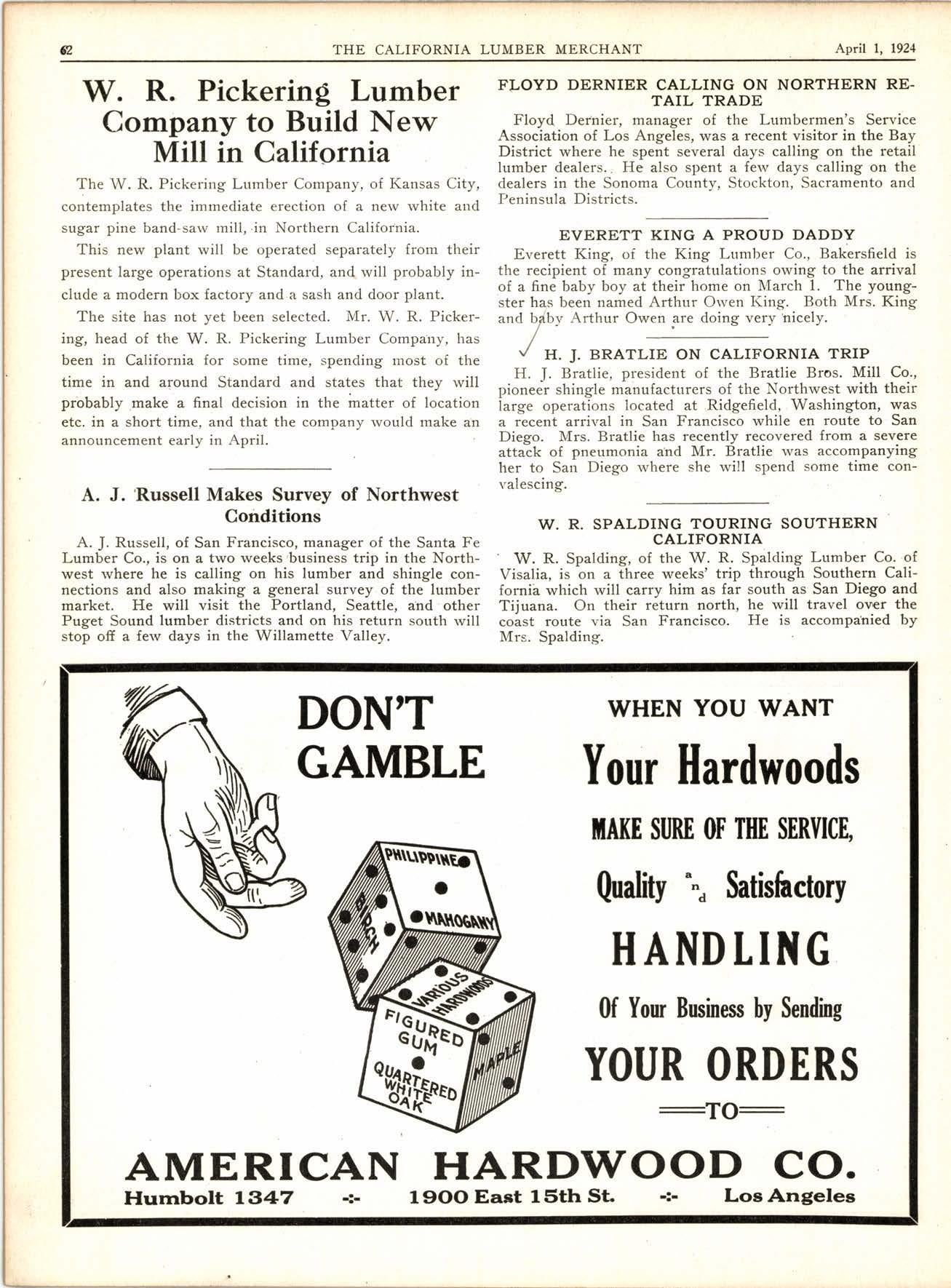
1 minute read
Why a Big Lumber Dealer Favors Grademarking
We.all know, of course, that the Government-acting cooperatively with the lumber associations 6f the countryhas developed uniform grades and specifications to be used nationally in the lumber industry; and that Secretary of Commerce Hoover strongly urged the rnills to all grademark their lumber for the protection of the public. In fact, Mr. Hoover told the lumbermen-in the slang phrase of the day-that they "must do it or else."
The other day the Southern Pine Association met in New Orleans to discuss grademarking all their product in compliance with the Governmental demands. And the most interesting business address of the entire meeting was delivered by a retail lumber dealer of San Antonio, Texas, Mr. G. E. Melliff, who has a national reputation as a lumber merchant.
Mr. Malliff got up and urged the mill men to grademark all of their product, and he based his demands on three fundamental reasons:
First, to protect the public and prevent the builder from being swindled by unscrupulous builders, lumber dealers, and others.
Second, to protect the manufacturers and at the same time force them to identifv and stand back of their own grades.
Third, to protect the legitimate and honest lumber dealer who desires to sell his customer the best of materials, btrt who is handicapped very frequently in so doing by having the other sort of lumber dealer offer in competition and at reduced prices low grade lumber under the guise of better lumber.
Then I\{r. Mallifi went on to tell his own experiences in meeting the competition of the unscrupulous dealer who juggles his grades, cuts the price, delivers lumber of a grade lower than specified when he gets the order, and furnishes the consumer a building of lower'quality than he wants, pays for, and is entitled to.
Mr. lVlalliff urged the necessity for protecting the consumer, as paramount, and declared that the only objections he had ever heard to grademarked lumber, was based on dishonest motives, and that no legitimate lumberman could be anything but benefitted if each piece of lumber be marked to show its grade, and delivered to the consumer on its legitimate face value.
The Southern Pine Association ttuanimously voted to grademark their lumber.
Mr. Hoover urged the point, at the first lumber-Governmental conference, that the consumer has the same right to look at a piece of lumber and identify it, as he has to look at a can of pr€served vegetables or fruit, and know that it was g'uaranteed under the pure food laws.
And in thisI\{r.Malliff strohgly supported him.









